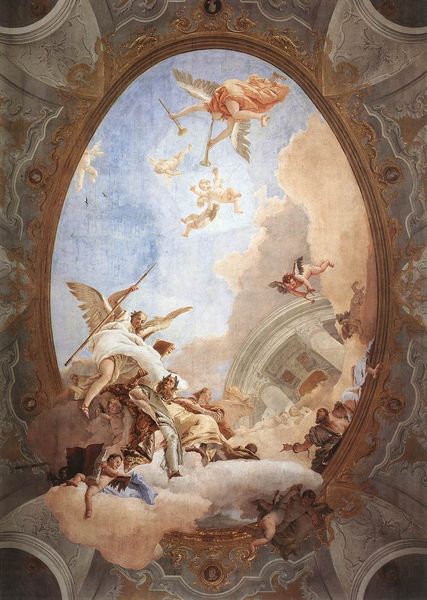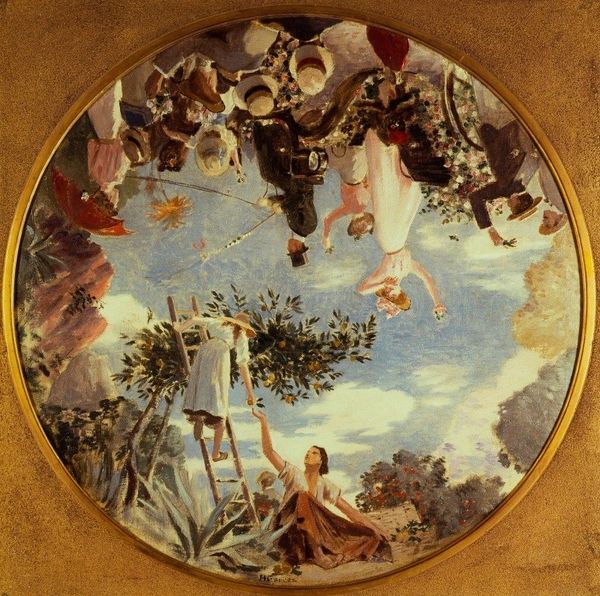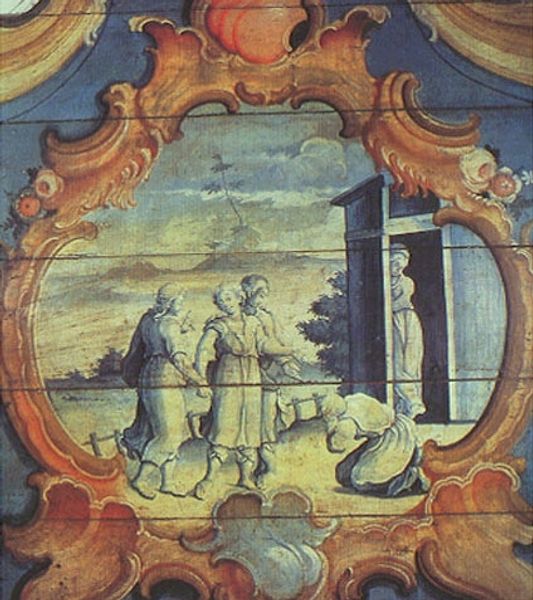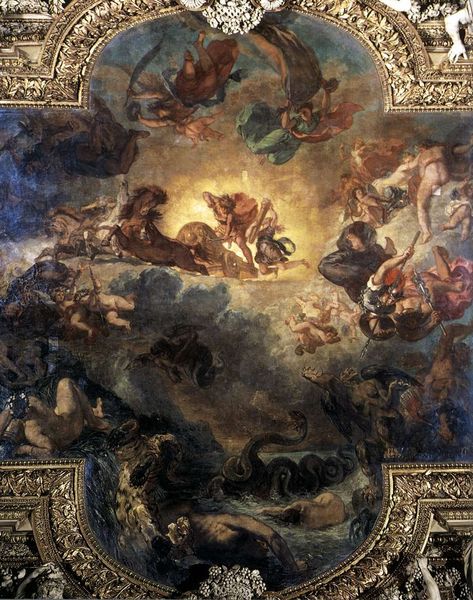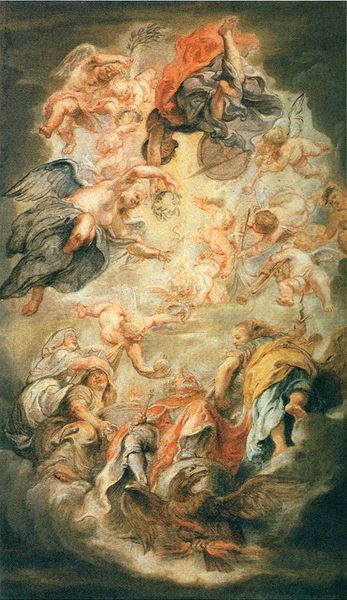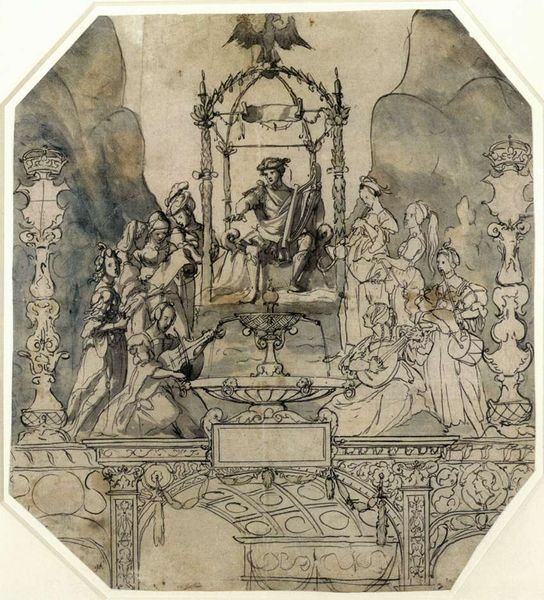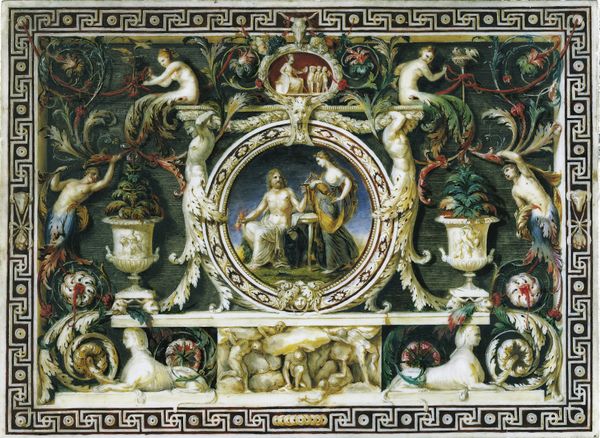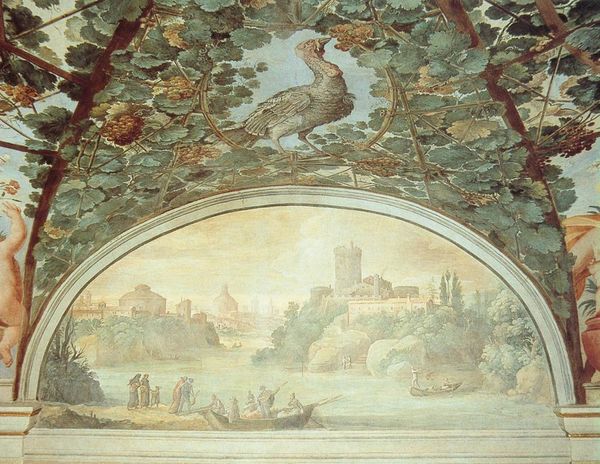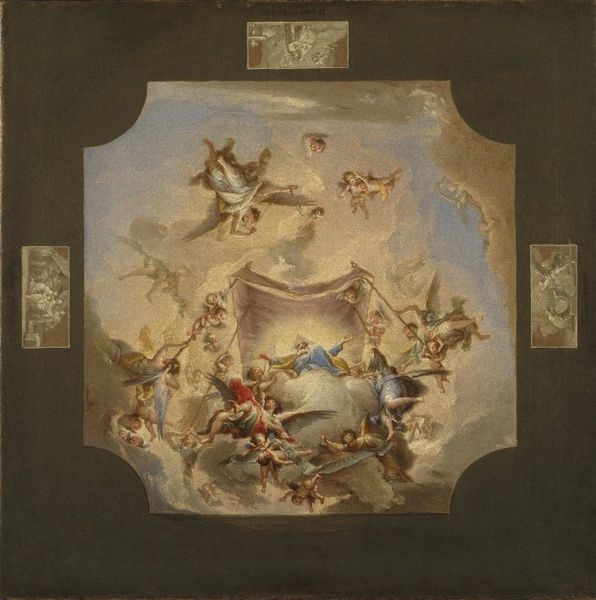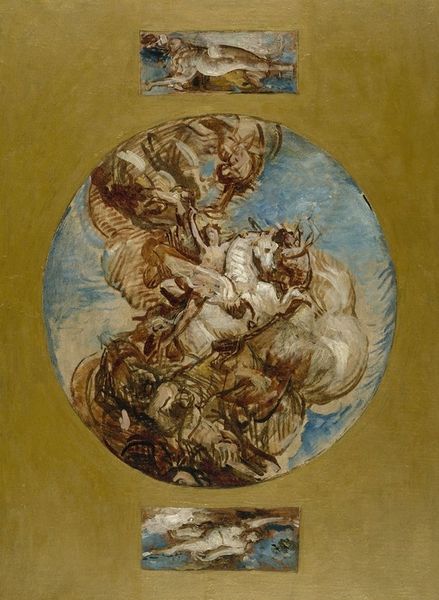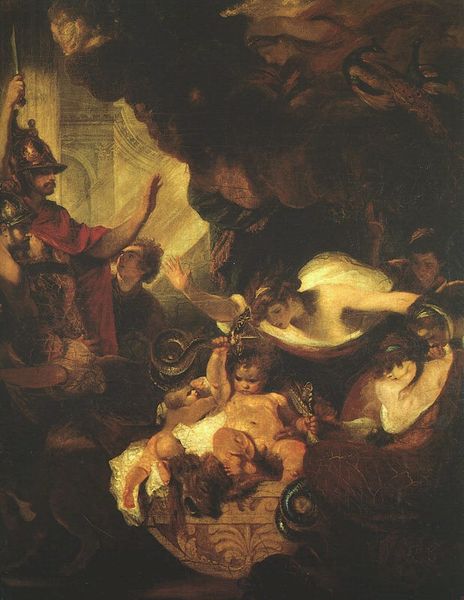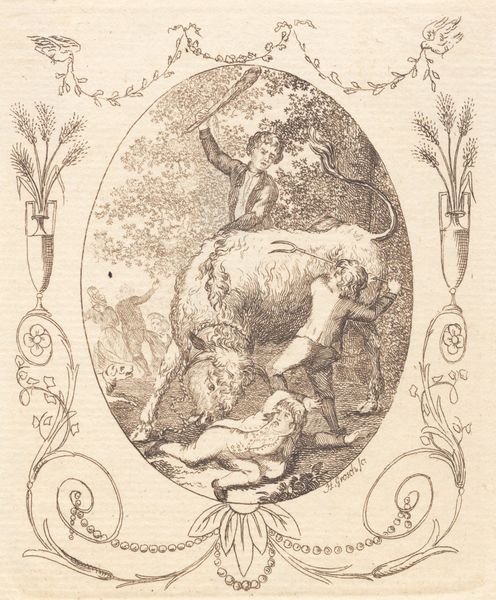
painting, fresco
#
neoclacissism
#
allegory
#
painting
#
greek-and-roman-art
#
figuration
#
fresco
#
oil painting
#
roman-mythology
#
underpainting
#
mythology
#
history-painting
#
italy
Copyright: Public domain
Curator: Immediately, what strikes me is the muted palette. It's aged, of course, but also evokes a sort of faded grandeur, a sense of mythological distance. Editor: And that ties in beautifully with its neoclassical roots. This fresco, "Tethys Immerses Achilles in the Waters of the Styx" by Francesco Hayez, dates to 1817 and currently resides at the Museo Correr in Venice. It captures a pivotal moment from Greek mythology. Curator: Absolutely. It depicts Tethys, a sea nymph, dipping her son Achilles into the River Styx to render him immortal, except, famously, for his heel. Looking at it, though, it's impossible not to think about anxieties surrounding masculinity and vulnerability. What does it mean to forge invincibility through such a dependent act, overseen by the feminine? Editor: I see what you mean, especially when considering how frescos were produced and situated, their purpose was to instill values, cement narratives in these noble villas. Consider the fresco as an object – a layer of pigment bound by plaster. The labor intensive method used here. The act of its making mirrors the tale itself – the binding, layering and material embedding mirroring the act of securing Achilles’ immortality. Curator: And even within the narrative of Achilles, we can read that act through an intersectional lens. Tethys is trying to protect him, but also denies him something: a lived, vulnerable experience, one accessible to mortals. The painting presents it as this sacrifice, but perhaps she inadvertently robs him of a fuller identity? Editor: I agree. But perhaps the very making and physical labor embedded in the materiality pushes towards a nuanced dialogue, Hayez working this into the space between grand ideals and daily applications in society. These things had an immediate cultural use and value. Curator: It all connects – the myth, its material depiction, and the ongoing conversations surrounding power, vulnerability, and how those are assigned along lines of gender. These classical stories never stop resonating precisely because these power structures continue to exist. Editor: Ultimately, Hayez gives us a look at the layers beneath that marble veneer. And these materials, in their very persistence and physical presence, offer avenues toward fresh insights, don’t they?
Comments
No comments
Be the first to comment and join the conversation on the ultimate creative platform.
